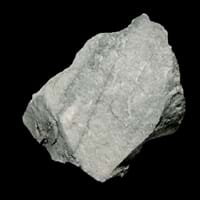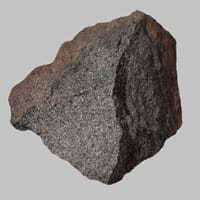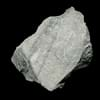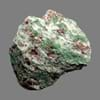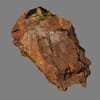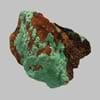Definition
Quartzite is a non-foliated metamorphic rock that forms by the metamorphism of pure quartz Sandstone
Websterite is ultramafic and ultrabasic rock that consists of roughly equal proportions of orthopyroxene and clinopyroxene. It is a special type of pyroxenite.
Origin
Unknown
Webster, North Carolina
Discoverer
Unknown
Unknown
Etymology
From quartz + -ite
From the town of Webster located in North Carolina
Class
Metamorphic Rocks
Igneous Rocks
Sub-Class
Durable Rock, Hard Rock
Durable Rock, Hard Rock
Group
Not Applicable
Plutonic
Other Categories
Medium Grained Rock, Opaque Rock
Coarse Grained Rock, Opaque Rock
Texture
Foliated, Granular
Clastic, Granular, Phaneritic, Porphyritic
Color
Black, Blue, Brown, Green, Light Grey, Purple, White, Yellow
Black to Grey, Bluish - Grey, Dark Greenish - Grey, Green, Light Greenish Grey
Durability
Durable
Durable
Scratch Resistant
Yes
Yes
Appearance
Lustrous
Layered, Banded, Veined and Shiny
Interior Uses
Countertops, Decorative Aggregates, Flooring, Homes
Countertops, Decorative Aggregates, Entryways, Floor Tiles, Flooring, Interior Decoration
Exterior Uses
As Building Stone, As Facing Stone, Garden Decoration, Paving Stone
As Building Stone, As Facing Stone, Garden Decoration, Paving Stone
Other Architectural Uses
Curbing
Curbing
Construction Industry
Arrowheads, As Dimension Stone, Cement Manufacture, Construction Aggregate, Cutting Tool, for Road Aggregate, Making natural cement, Production of Glass and Ceramics, Rail Track Ballast, Roadstone
As Dimension Stone, Building houses or walls, Cement Manufacture, Construction Aggregate, for Road Aggregate
Medical Industry
Not Yet Used
Not Yet Used
Antiquity Uses
Artifacts, Jewellery, Monuments, Sculpture
Artifacts
Commercial Uses
An Oil and Gas Reservoir, As armour rock for sea walls, Cemetery Markers, Commemorative Tablets, In aquifers, Laboratory bench tops, Petroleum reservoirs, Soil Conditioner, Source of Magnesia (MgO), Tombstones, Used in aquariums
Cemetery Markers, Commemorative Tablets, Creating Artwork, Laboratory bench tops, Jewelry, Sea Defence, Tombstones
Types
Not Available
Not Available
Features
Generally rough to touch, Is one of the oldest rock
Generally rough to touch, Is one of the oldest rock
Archaeological Significance
Monuments
Used
Not Yet Used
Famous Monuments
Data Not Available
Data Not Available
Sculpture
Used
Not Yet Used
Famous Sculptures
Data Not Available
Data Not Available
Pictographs
Not Used
Not Used
Petroglyphs
Not Used
Not Used
Figurines
Used
Not Yet Used
Formation
Quartzite forms from sandstone and the mineral quartz being put under extreme heat and pressure.
Websterite can be formed as cumulates in ultramafic intrusions by accumulation of pyroxene crystals at the base of the lava chamber.
Mineral Content
Chlorite, Epidote, Hematite, Kyanite, Magnetite, Muscovite or Illite, Quartz
Amphibole, Augite, Bronzite, Chromite, Diopside, Enstatite, Garnet, Hornblende, Hypersthene, Magnetite, Pyroxene
Compound Content
Aluminium Oxide, CaO, Iron(III) Oxide, MgO, Sodium Oxide, Silicon Dioxide
Aluminium Oxide, CaO, Chromium(III) Oxide, Iron(III) Oxide, Potassium Oxide, MgO, Sodium Oxide, Silicon Dioxide, Sulfur Trioxide
Types of Metamorphism
Burial Metamorphism, Cataclastic Metamorphism, Hydrothermal Metamorphism, Regional Metamorphism
Burial Metamorphism, Impact Metamorphism
Types of Weathering
Biological Weathering, Chemical Weathering, Mechanical Weathering
Biological Weathering, Chemical Weathering, Mechanical Weathering
Types of Erosion
Chemical Erosion, Coastal Erosion, Water Erosion, Wind Erosion
Chemical Erosion, Coastal Erosion, Glacier Erosion, Water Erosion, Wind Erosion
Grain Size
Medium Grained
Coarse Grained
Fracture
Uneven, Splintery or Conchoidal
Uneven
Streak
White
White, Greenish White or Grey
Porosity
Less Porous
Less Porous
Luster
Vitreous
Dull to Vitreous to Submetallic
Compressive Strength
Not Available
Cleavage
Indiscernible
Irregular
Toughness
1.9
Not Available
Specific Gravity
2.6-2.8
3.2-3.5
Transparency
Transparent to Translucent
Opaque
Density
2.32-2.42 g/cm3
3.1-3.6 g/cm3
Specific Heat Capacity
Not Available
Resistance
Heat Resistant, Impact Resistant, Pressure Resistant, Wear Resistant
Impact Resistant, Pressure Resistant, Wear Resistant
Deposits in Eastern Continents
Asia
China, India, Israel, Russia, South Korea, Thailand, Turkey
India, Russia
Africa
Ethiopia, Morocco, South Africa, Zimbabwe
South Africa
Europe
England, Italy, Norway, Scotland, Sweden, United Kingdom
Germany, Greece, Italy, Scotland, Turkey
Others
Greenland
Greenland
Deposits in Western Continents
North America
Bahamas, Canada, USA
Canada, USA
South America
Brazil, Colombia, Venezuela
Brazil, Colombia, Venezuela
Deposits in Oceania Continent
Australia
New Zealand, Queensland, Western Australia
New Zealand, Queensland
Quartzite vs Websterite Characteristics
Though some rocks look identical, they have certain characteristics which distinguish them from others. Characteristics of rocks include texture, appearance, color, fracture, streak, hardness etc. Quartzite vs Websterite characteristics assist us to distinguish and recognize rocks. Also you can check about Properties of Quartzite and Properties of Websterite. Learn more about Quartzite vs Websterite in the next section. The interior uses of Quartzite include Countertops, Decorative aggregates, Flooring and Homes whereas the interior uses of Websterite include Countertops, Decorative aggregates, Entryways, Floor tiles, Flooring and Interior decoration. Due to some exceptional properties of Quartzite and Websterite, they have various applications in construction industry. The uses of Quartzite in construction industry include Arrowheads, As dimension stone, Cement manufacture, Construction aggregate, Cutting tool, For road aggregate, Making natural cement, Production of glass and ceramics, Rail track ballast, Roadstone and that of Websterite include As dimension stone, Building houses or walls, Cement manufacture, Construction aggregate, For road aggregate.
More about Quartzite and Websterite
Here you can know more about Quartzite and Websterite. The life cycle of a rock consists of formation of rock, composition of rock and transformation of rock. The composition of Quartzite and Websterite consists of mineral content and compound content. The mineral content of Quartzite includes Chlorite, Epidote, Hematite, Kyanite, Magnetite, Muscovite or Illite, Quartz and mineral content of Websterite includes Amphibole, Augite, Bronzite, Chromite, Diopside, Enstatite, Garnet, Hornblende, Hypersthene, Magnetite, Pyroxene. You can also check out the list of all Metamorphic Rocks. When we have to compare Quartzite vs Websterite, the texture, color and appearance plays an important role in determining the type of rock. Quartzite is available in black, blue, brown, green, light grey, purple, white, yellow colors whereas, Websterite is available in black to grey, bluish - grey, dark greenish - grey, green, light greenish grey colors. Appearance of Quartzite is Lustrous and that of Websterite is Layered, Banded, Veined and Shiny. Properties of rock is another aspect for Quartzite vs Websterite. The hardness of Quartzite is 6-7 and that of Websterite is 7. The types of Quartzite are Not Available whereas types of Websterite are Not Available. Streak of rock is the color of powder produced when it is dragged across an unweathered surface. The streak of Quartzite is white while that of Websterite is white, greenish white or grey. The specific heat capacity of Quartzite is 0.75 kJ/Kg K and that of Websterite is Not Available. Depending on the properties like hardness, toughness, specific heat capacity, porosity etc., rocks are resistant to heat, wear, impact, etc.Quartzite is heat resistant, impact resistant, pressure resistant, wear resistant whereas Websterite is impact resistant, pressure resistant, wear resistant.
